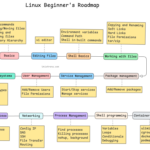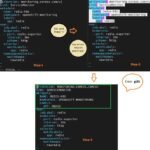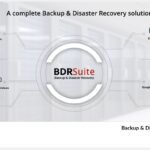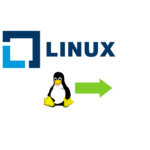Linux is a free, open-source operating system widely used in servers, cloud environments, embedded systems, and even desktops. It is known for its stability, flexibility, and security, making it a cornerstone in fields like DevOps, cybersecurity, and software development. If you’re new to Linux, this roadmap will guide you through the essentials you need to […]
Linux
How to Create Animated GIFs from Linux Terminal Output: A Step-by-Step Guide
Capturing and sharing terminal sessions has never been easier with Asciinema, a powerful tool for recording command-line interactions. In this blog post, we’ll explore how to harness the capabilities of Asciinema to create captivating GIF animations from your terminal sessions. Whether you’re documenting a tutorial, showcasing your command-line prowess, or simply adding visual appeal to […]
How to create banner messages in Linux quickly?
The banner message refers to the text that is displayed when a user logs into the system. This message is typically displayed before the login prompt and can be used to convey important information or notices to users. MOTD (Message of the Day): The MOTD is a dynamic message that is displayed to users after […]
How to secure Kubernetes cluster ? Why etcd backup is important ?
Securing etcd in a Kubernetes cluster is crucial as etcd is a distributed key-value store that holds the cluster’s configuration data, including sensitive information. It acts as a reliable and highly available database that stores information about the cluster’s configuration, its current state, and metadata. What “etcd” does in kubernetes ? 1. Configuration Data Store: […]
How to login to Docker Container/Pods ? Kubernetes/OpenShift
Container is a lightweight, standalone, and executable package of software that includes everything needed to run a piece of software, including the code, a runtime, system tools, libraries, and settings. containers are built from images, which are essentially snapshots of a container at a specific point in time. Docker is most widely used container solution […]
Quick vi editor hacks for DevOps Engineers
DevOps engineers have to work on a wide range of toolsets to meet the organization’s requirements. In the DevOps role, one tool is going to stay forever to make an engineer’s life simple and more powerful. As the article heading says, it is “vi” editor. The “vi” editor is created by Bill Joy in 1976 […]
BDRSuite – Backup for Linux Endpoints
Protecting customer data on their workstation and laptop is very essential. Most of the uncommitted valuable data reside in Laptops and Desktops. Most Organizations protect the endpoints using regular backups and recover the data in no time in case of hardware failures or accidental deletion. This article will walk you through how to install and […]
Veeam Backup for AWS – Deploy and configure
How to deploy Veeam Backup for the AWS solution? Veeam Backup for Amazon Web Services is a solution developed to protect Amazon Elastic Compute Cloud (EC2), Amazon Relational Database Service (RDS), and Amazon Elastic File System (EFS) environments. The same product can able to handle disaster recovery tasks with ease by leveraging cloud native snapshots. Adding […]
Protect AWS EC2 with robust backup software
Are you looking for robust backup software to protect AWS EC2 instances? I have been searching for a simple backup solution to protect my EC2 instances automatically with a pre-defined schedule. Recently came across “BDRSuite” from LinkedIn and thought of giving it a try. This tool is a really simple one with a clean web […]
How to extend the root filesystem in RHEL 8 / CentOS 8?
How to extend / (root) filesystem without reinstalling the operating system ?. Is it possible to extend the root filesystem without destroying data? Is it possible to extend on the fly? The answer is yes if you are using LVM. This article will walk you through extending the root filesystem on Redhat Linux 8 (RHEL […]









